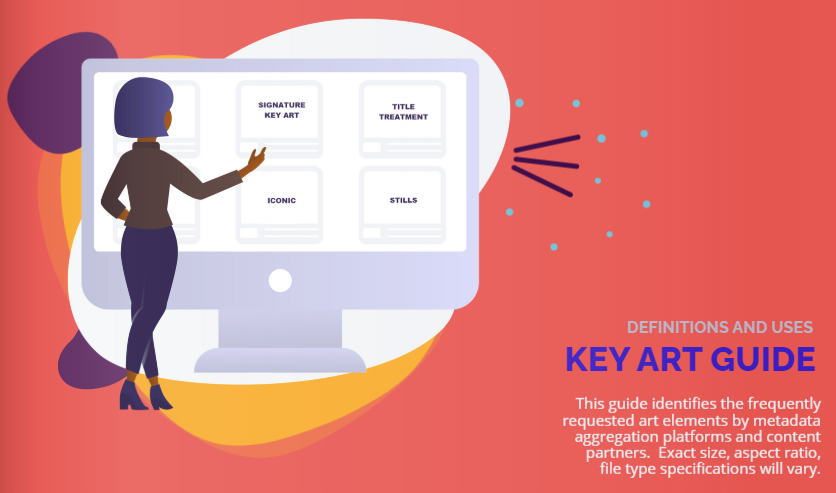The chart below details the most commonly requested image types. Be sure to request an Image Style Guide from every outlet you are working with so that you know what sizes, aspect ratios, and file formats to provide. These details vary considerably by partner and platform, so don't try to send the same files to every partner or you risk having that platform run no images for your content at all!
All images and artwork for web/digital use should be high-resolution (minimum 72 dpi) unless otherwise specified.
TYPE | DESCRIPTION | ARTWORK |
|---|---|---|
Signature Key Art | A visual representation of the Series or program with title. This art tells the viewer what they can expect, who’s featured and possibly what the setting or time period is. This the most requested type of artwork for platforms. This artwork can also change from season to season. Should not include a PBS logo or tune-in day/time. | |
Iconic Key Art | Textless version of the Signature Key Art, meaning no show title or branding, just the imagery. This is so the platform can apply additional metadata text to be overlaid (show synopsis, cast info, genre, runtime, etc.) that allows the viewer to learn more about the show once they have clicked on the title to watch. | |
Title Treatment | This is the Series or program title logo only. This type of asset can be requested alongside the key art, to allow the platform to use each asset in a separate manner. Some partners only need the title treatment over the key art, and some require both. | |
Backdrop | This artwork is used in a similar fashion to the Iconic. However, the difference is that this artwork requires the imagery to be right-justified—meaning the imagery should only be seen on the right-side of the file, leaving the space on the left blank to allow additional metadata text to be overlaid. This ensures that the descriptive metadata is not obstructed or hard to read with colors and images underneath. | |
Show Images | A representation of a scene pulled directly from the show itself. The image can contain a specific scene from an episode that includes actors in character, that are not posed or looking directly at the camera. These are not behind-the-scenes shots and should not include any productions elements (like lighting set-ups, camerawork or a director in the shot). Also, the image should not include any text or logo/branding and be mindful to avoid any scenes that may reveal a huge spoiler or plot-reveal. | |
Network or Series | The logo is provided so that it can be included on menu and listings guides associated with the network. Some platforms provide logo-search as an option for Viewers to find content quickly. It expedites the search for a show title if the Viewer knows the network that is associated. |
A Note on Sizes & Formats
IMAGE SIZES
- Each platform’s Image Style Guide will detail preferred sizes, pixels, and aspect ratios.
- The number of sizes and aspect ratios will vary by platform to serve varying purposes (menu guide, background, thumbnail images, etc.)
- It's not uncommon for platforms to ask that you deliver the same image in multiple sizes (from small to large) or in different aspect ratios (horizontal, vertical or square).
FILE FORMATS
The file format requested can also differ by platforms.
- JPG: The most frequently requested and accepted file format is JPG (also sometimes referred to as JPEG or .jpg). JPG is the format most convenient for the delivery of compressed images.
- PSD (or layered files) is another frequently requested format. Although larger in size, these files are best for providing higher-quality graphics that can be easily edited. It provides imaging options that are limited with the JPEG format. The PSD format can also cut back on the number of files that may be required for delivery, since with a PSD, Key Art with program title can easily be manipulated into Iconic (the removal of text) because of the layered graphics. PSDs are much larger than standard JPG files and usually require a link for sharing and downloading.
- PNG: a suitable file for "lossless" compression (meaning that the image is not degraded when compressed).
- AI: a format used mostly for transparent title treatments.
- EPS: most often used for non-transparent title treatments.
- SVG: another file option that can be scaled down without losing resolution or degrading the quality of the image.






